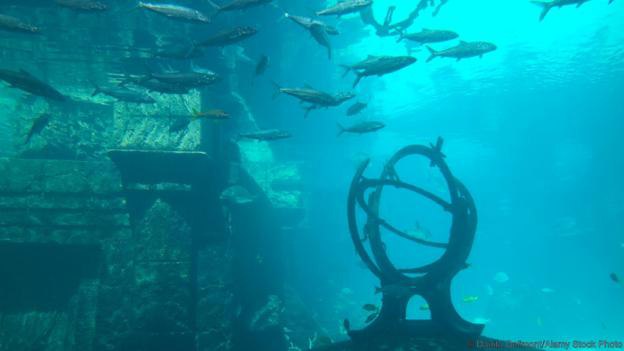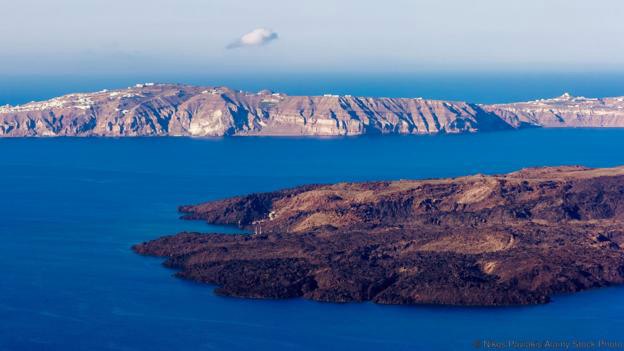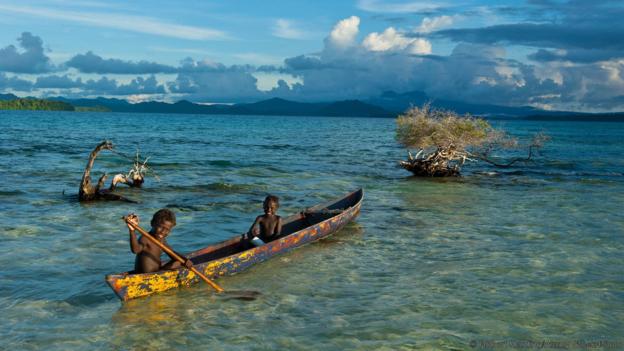Local legends often tell of cities or islands that have been lost to the waves. Nowadays we are sceptical of these tales, but some of them really happened
By Jane Palmer
In one cataclysmic night, the gods sent a battalion of fire and earthquakes so intense that the Utopian kingdom of Atlantis sank deep into the ocean, never to be found again.
So tells Plato's infamous myth, which has captivated audiences for more than 2,300 years. Many people have subsequently floated theories about exactly where Atlantis was: in the Mediterranean, off the coast of Spain, even under Antarctica. A popular idea is that the Atlantis myth is associated with the fate of Thera, now the Greek island of Santorini, which was partly destroyed by a volcanic eruption about 3,600 years ago. But many, if not most, scientists think we will never tie Atlantis to a real location.
"I don't think there's any question that the story of Atlantis is a myth," says Patrick Nunn, a geologist at the University of the Sunshine Coast in Queensland, Australia.
But Atlantis is not the only legend of a sunken city. Similar tales are told around the world, and it now seems that some of them are true.
[http://ichef.bbci.co.uk/wwfeatures/wm/live/1600_900/images/live/p0/3f/w1/p03fw1dp.jpg|
]

Atlantis has fired people's imaginations for centuries
Plato was living in a volcanically and tectonically active part of the world where massive earthquakes and tsunamis were not usual.
These myths provide a window upon those events that can be recovered, retrieved and even dated
"He observed what was going on and he used details from these observations to make his narrative about Atlantis sound more credible," says Nunn. "But, I think, there's no way that we could consider Atlantis as a particular place."
Despite Nunn's scepticism about this ill-fated kingdom, he is one of a growing band of geologists who have begun to take an interest in similar myths in the belief that some really can shed light on ancient geological events.
In 1966, the scientist Dorothy Vitaliano coined a name for the discipline: geomythology. It is, she said, the science of "seeking to find the real geological event underlying a myth or legend to which it has given rise".
[http://ichef.bbci.co.uk/wwfeatures/wm/live/1600_900/images/live/p0/3f/w0/p03fw0j4.jpg|
]

Santorini is a huge volcanic caldera
"Myths are largely event-based, in that they are triggered to a large part by an event, or combination of events, that catastrophically impact society," says Bruce Masse, an environmental archaeologist, who co-edited a volume on the subject. "Then these myths provide a window upon those events that can be recovered, retrieved and even dated."
A close inspection of such "geomyths" has revealed valuable information – a date for the most recent eruption of the volcano Nabukelevu in Fiji, for example.
And scientists have no shortage of myths, or geological events, to ponder: stories of volcanoes and earthquakes abound, as do tales of catastrophic floods and lands submerged under the sea.

Solomon Islanders tell tales of sunken lands
When Nunn heard the story of another lost island, Teonimanu in the Solomon Islands of the South Pacific, he was instantly intrigued. "It was high land, it wasn't a low atoll or reef island just made of sand that could be easily washed away," Nunn says. "It was a substantial island that disappeared."
Waves can't wash away islands, particularly islands that are high and volcanic
The tale tells of the cuckolded husband Roraimenu, whose wife Sauwete'au went to live with another man on the island of Teonimanu. An enraged Roraimenu purchased a wave curse to seek his revenge and travelled to the island of Teonimanu, with four waves attached to the front of his canoe, and four on the rear.
Once ashore, he planted two taro plants, kept another and beat a hasty retreat to his own island of Ali'ite. The curse stated that when the leaves sprouted on his taro plant, the onslaught would start. On that day, Roraimenu watched from a mountaintop as the eight waves surged on Teonimanu, one by one, until it sank, never to be seen again.
Nunn interprets the waves in the story as a description of a tsunami train – many tsunamis consist of a series of waves. "But of course, waves can't wash away islands, particularly islands that are high and volcanic," Nunn says.
Read more: http://www.bbc.com/earth/story/20160118-the-atlantis-style-myths-of-sunken-lands-that-are-really-true
